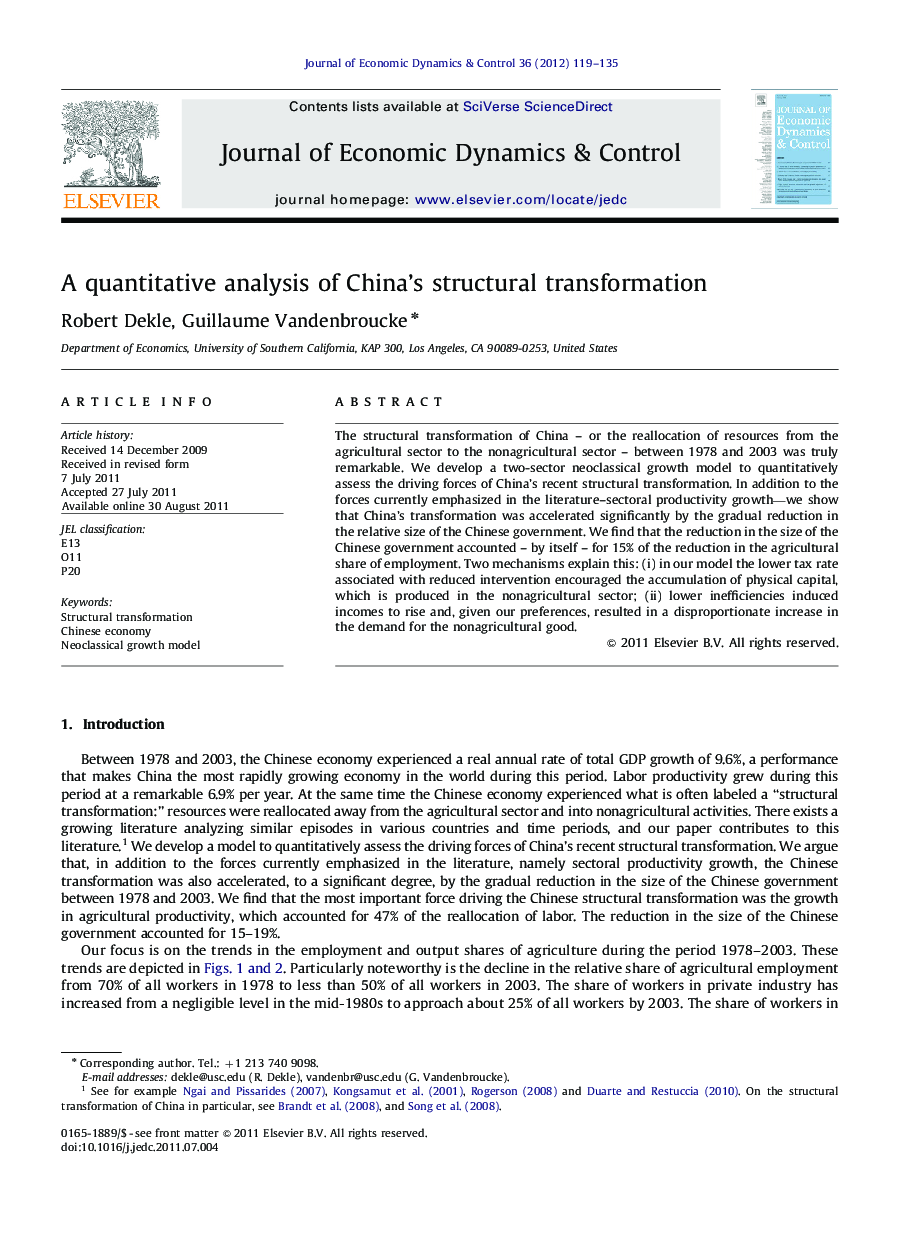| Article ID | Journal | Published Year | Pages | File Type |
|---|---|---|---|---|
| 5099235 | Journal of Economic Dynamics and Control | 2012 | 17 Pages |
Abstract
The structural transformation of China - or the reallocation of resources from the agricultural sector to the nonagricultural sector - between 1978 and 2003 was truly remarkable. We develop a two-sector neoclassical growth model to quantitatively assess the driving forces of China's recent structural transformation. In addition to the forces currently emphasized in the literature-sectoral productivity growth-we show that China's transformation was accelerated significantly by the gradual reduction in the relative size of the Chinese government. We find that the reduction in the size of the Chinese government accounted - by itself - for 15% of the reduction in the agricultural share of employment. Two mechanisms explain this: (i) in our model the lower tax rate associated with reduced intervention encouraged the accumulation of physical capital, which is produced in the nonagricultural sector; (ii) lower inefficiencies induced incomes to rise and, given our preferences, resulted in a disproportionate increase in the demand for the nonagricultural good.
Related Topics
Physical Sciences and Engineering
Mathematics
Control and Optimization
Authors
Robert Dekle, Guillaume Vandenbroucke,
